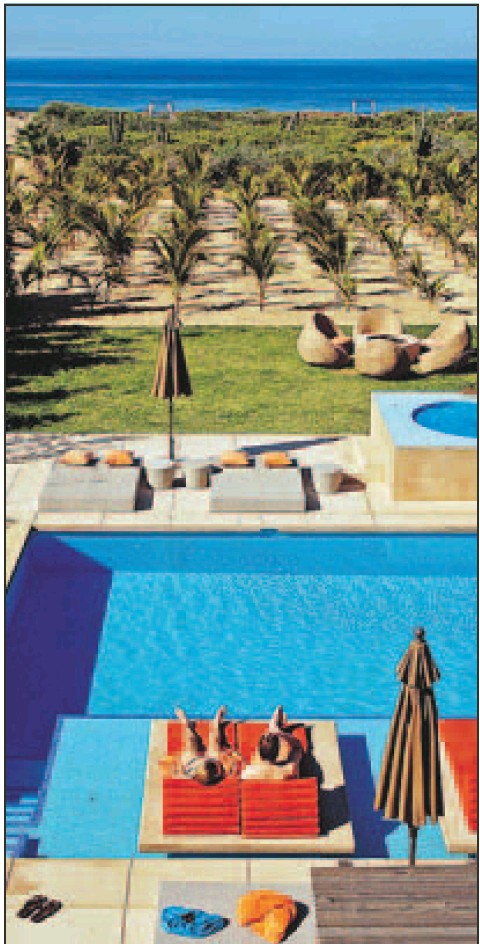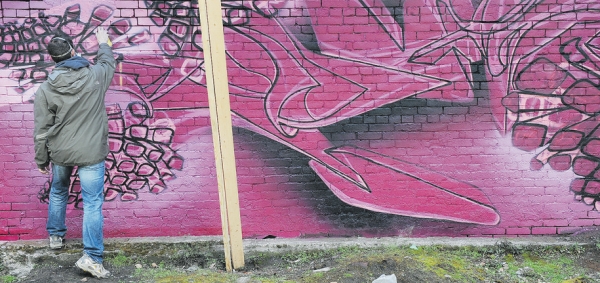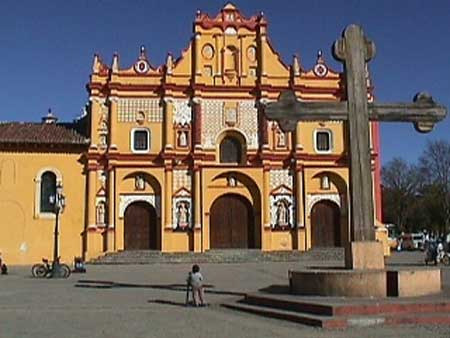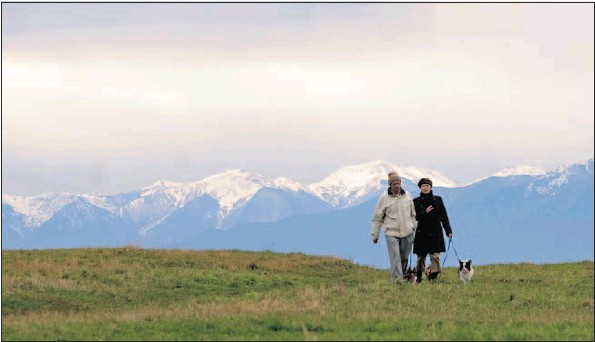Small and sleepy, there is plenty of atmosphere and not a lot of action— the way people like it
CHRISTOPHER REYNOLDS
Sun

Pelicans and other birds enjoy the deserted beach at La Cachora Beach near downtown Todos Santos.

TODOS SANTOS, Mexico — Once upon a time, say about 1972, Cabo San Lucas was a sleepy little fishing town at the southern tip of Baja California . Then came the paved highway, the international airport, the marina, the golf courses, the raucous bars and well-heeled retreats. At the newest and perhaps fanciest, Capella Pedregal, suites start at $ 675 a night.
In Cabo, you just might score the spring break you’ll never forget — or the one you won’t remember.
And then there’s Todos Santos, still small, still drowsy at most hours, wedged between the mountains and sea about 80 kilometres north of Cabo.
Its sugar mills, born amid a 19th century boom, died about 60 years ago. The paved highway didn’t arrive until the mid-1980s, about the time the first American expat artist, Charles Stewart, moved in. With no airport, no marina, no golf and virtually no nightlife, downtown amounts to a few blocks of newish galleries, inns and shops in oldish buildings. Outside town, cardoon cacti stipple the hills, and kilometres of lonely beaches roar under assault by waves so wicked that surfers and swimmers must pick their spots carefully.
Todos Santos, whose population might be as high as 15,000, depending on how many surrounding hamlets you include, is not where you come for action. But if you’re after Mexican flavour, Pacific solitude, desert vistas and fresh food, this might be your place.
“ We close down at Baja midnight, which is 9 o’clock,” said Lisa Harper, former chief executive of Gymboree and now proprietor of the Rancho Pescadero hotel, about 10 kilometres south of town. “ We’re not up partying until all hours. It’s a very calm, relaxed area. Lots of surfers, lots of expats. Lots of fantastic Mexican food, great galleries and artists.”
Pat Cope, who arrived from Los Angeles to open a gallery with her husband, Michael, and infant son, Lane, remembers that “ when we first moved here, all I heard was roosters.” Sixteen years later, Lane is contemplating colleges, and the roosters still greet each morning, Cope said, but “ I don’t hear them.”
Todos Santos, said Paula Colombo, co-owner of the Cafe Santa-Fe, “ is real. Good and bad, it’s real.” Now that the recession has slowed the pace of coastal vacation-home building outside town, Colombo added, “ maybe we can settle down and do what we have to do to keep this place as magnificent as it could be … an oasis in the desert.”
My first stop was at Harper’s Rancho Pescadero hotel ( no warning given, full price paid). Rancho Pescadero, billed as a different kind of “ dude” ranch, has been busy since it opened in November 2009 with 12 rooms, a restaurant, a bar and a pool. If things keep going this well, Harper said, the hotel could add 15 units by year’s end.
To reach the six-hectare site, you turn off two-lane Highway 19 at a Pemex station, drive 1.5 kilometres on a dirt/ sand road and stop just past the green fields of basil. ( The area sits on an aquifer that feeds many organic growing operations and keeps the place rich in chilies, mangoes, avocados and papayas.)
Once on the grounds, you can take refuge in your large room ( the smallest is still more than 55 square metres) or on your mostly private patio. Before long, you’ll be sipping your welcome drink, strolling past the fire pit, through the fledgling palm grove, to the dunes and the wide, lonely beach.
Don’t jump in. Staffers warn guests not to swim at the hotel-adjacent beach because the tide is treacherous. But you can flop on to one of the Rancho Pescadero daybeds on the dunes. Or walk at water’s edge, especially near dawn or dusk, where you’ll get the full effect of the near-empty beach coastline: pelicans gliding above the swells, offshore breezes blowing feathered foam off the whitecaps
It’s a wonder I turned away long enough to spot the handwritten signs for the San Pedrito Surf Hotel, a few hundred metres north of Rancho Pescadero. Beginning four years ago, manager/ co-owner Andy Keller and the other owners upgraded the beachfront site from a camping spot to a seven-unit hotel ( rates are $ 55$ 200, a kitchen in every room), but it remains rustic: tile floors, a few shelves of well-thumbed paperbacks, all at the end of another dirt road.
“ I’m into the classic look,” Keller said. “ No red lights, no parking meters, no pavement … You have the dirt roads, you have the dogs with no collars … the proximity of the mountains just beyond us here, and the ocean just behind me. It’s the best of both worlds.”
Out on the water — that is, the San Pedrito surf break, known up and down the West Coast — I spotted half a dozen euphoric young men carving waves with their short boards
If you can’t surf like these guys but want to get into the ocean, you drive a couple of kilometres south to Cerritos Beach , which has milder tides and beach gear for rent and the passable Cerritos Beach club restaurant. This beach, long empty, has been busy with development in the last few years. Just south of the restaurant, workers have completed about 10 Cerritos Surf Colony bungalows, being sold as time-shares and rented at $ 125 nightly.
Downtown Todos Santos includes the 18th century mission on the plaza, the galleries, shops and eateries on narrow streets, mostly unpaved. I looked at paintings in Galeria Logan and Galeria Indigo, chatted with sculptor Benito Ortega in his studio, checked out the 1930s mural at the Cultural Center . I picked up a book at El Tecolote bookshop on the main drag, Juarez, and sipped some cool gazpacho on the patio of Los Adobes de Todos Santos .
I drove out to Punta Lobos Beach, where you can buy fresh catch from the fishermen as they drag their boats ashore about 2: 30 p. m. each day.
This is no longer a town I can hold in the palm of my hand, which is what it seemed when I first visited in 1995. Todos Santos has probably doubled in population since. In 2006, local boosters managed to win a “ Pueblo Magico” designation from national tourism officials, even though the label is usually reserved for towns with elaborately restored older buildings. If the highway is improved as promised, the drive to Los Cabos airport could drop from one hour and 40 minutes to one hour.
But even so, there isn’t a lodging here with more than 14 rooms. And though some have Wi-Fi and airconditioning, most don’t bother with guest phones or TVs. I’m guessing that if you put two tourists in every guest bed, the population would grow by 500, tops.
In the wee hours of my night at Holito, a chorus of crowing roosters piped up. They never quite settled down, and neither did I. When I met Armit over coffee later, she told me the farmer across the street had brought in hundreds of the caged birds. If you run a business in Todos Santos, it seems, crises like these come and go.
“ And if you haven’t got a sense of humour,” Armit said with a winning grin, “ you shouldn’t live in Mexico .”
© Copyright (c) The Vancouver Sun




